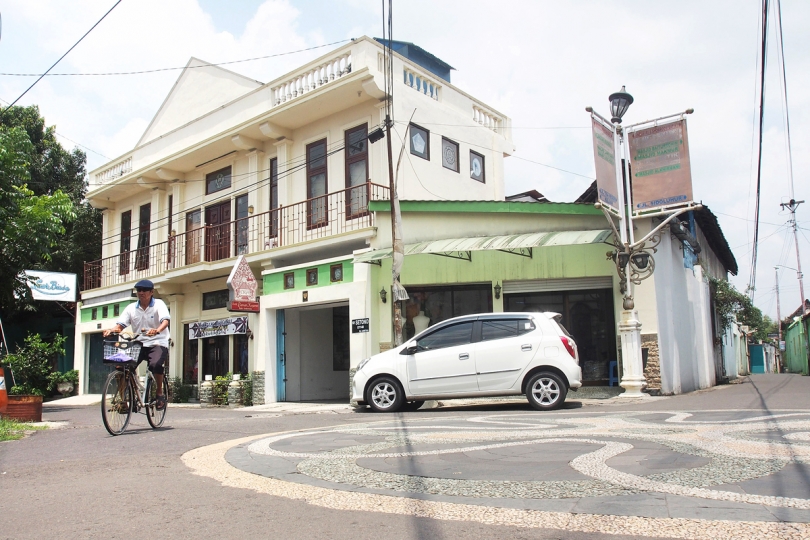In Java, heritage houses tumble

Home to a bustling batik trade, Laweyan is at risk of losing its history
Known as one of the main batik centres in Central Java’s Surakarta, Kampung Laweyan is losing its identity as many heritage buildings in the area have been replaced by modern architecture.
A lack of understanding about the importance of preserving heritage buildings is reportedly the reason most owners decide to modernise.
Laweyan Batik Village Development Forum (FPKBL) chairman Alpha Febela Priyatmono says many old buildings – mostly residences and shophouses – have been completely renovated.
“Around 30 per cent of some 100 heritage buildings in the batik village have been renovated with more modern architecture,” says Alpha, who’s also a member of the Surakarta Cultural Heritage Expert Team.
He says most property owners are unaware of the cultural value of their buildings, so the upgrades they make feature no elements that might serve as reminders of history.
“If only they understood, they would pay more attention to the buildings and their maintenance,” Alpha says.
Apart from changes to the structure, he notes, many buildings are completely demolished because they’ve never been adequately maintained.
“They live in a heritage area, but they demolish the heritage buildings and replace them with modern architecture,” Alpha says. “If nothing is done, Laweyan will lose its uniqueness.” Homes in the 24-hectare village offer a unique blend of Javanese, European, Chinese and Islamic architecture, all surrounded by tall fences. In Laweyan’s narrow alleys are the houses of batik makers from the early 20th century.
Laweyan enjoyed its heyday as a batik trading centre from 1900 to the early 1980s. Overwhelmed by modern batik products from China, though, it ceased producing handmade fabric.
The dark period lasted until 2004, when the local batik industry began to revive. Today, after more than 10 years, batik has turned Laweyan into a popular shopping and tourist destination. The area now has more than 200 artisans producing modern-style batik.
Mufti Raharjo, head of the Surakarta Spatial Planning Agency’s cultural heritage preservation division, blames the destruction of older homes on the lack of a bylaw regulating their maintenance and conservation.
Mufti says that, although Laweyan was declared a cultural heritage site in 2010, not all owners of the buildings are interested in preserving the past.
He admits there are no efforts to turn old houses into shophouses in Laweyan, since they haven’t yet been registered for their cultural importance. “But that doesn’t mean we’ll let the owners demolish the houses and replace them with modern shophouses.”
Local historian Heri Priyatmoko says the local administration must be more selective in issuing building permits for the establishment of shophouses and other facilities that could destroy the old buildings. “The administration has to be more sensitive, because many heritage buildings need to be preserved,” Heri says.
RELATED





